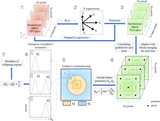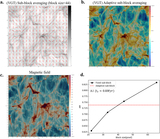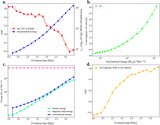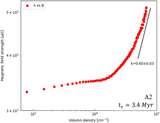Image Details
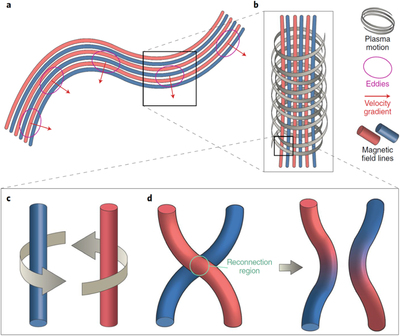
Caption: Figure 1.
Cartoon extracted from Pattle (2019), explaining the principles behind the velocity gradient technique. Panel (a): the VGT technique considers Alfvénic fluid motions, wherein a magnetic field and the conducting fluid in which it is embedded move together. Panel (b): turbulent eddies are elongated along magnetic field lines. Panel (c): embedded magnetic field lines are preferentially moved perpendicular to their local direction by small-scale turbulent eddy motions. Panel (d): turbulent reconnection is an essential part of the dynamics of turbulent eddies, which enables the mixing of magnetic field lines perpendicular to the magnetic field direction. Mixing motions within the eddies (shown as magenta circles in panel (a)) induce changes of the fluid velocities perpendicular to the magnetic field lines. Therefore, local gas velocity gradients (red arrows in panel (a)) are directed perpendicular to the local directions of the magnetic field. As a result, it is possible to predict the direction of the magnetic field by measuring the direction of gas flow velocity gradients.
Copyright and Terms & Conditions
© 2020. The American Astronomical Society. All rights reserved.



